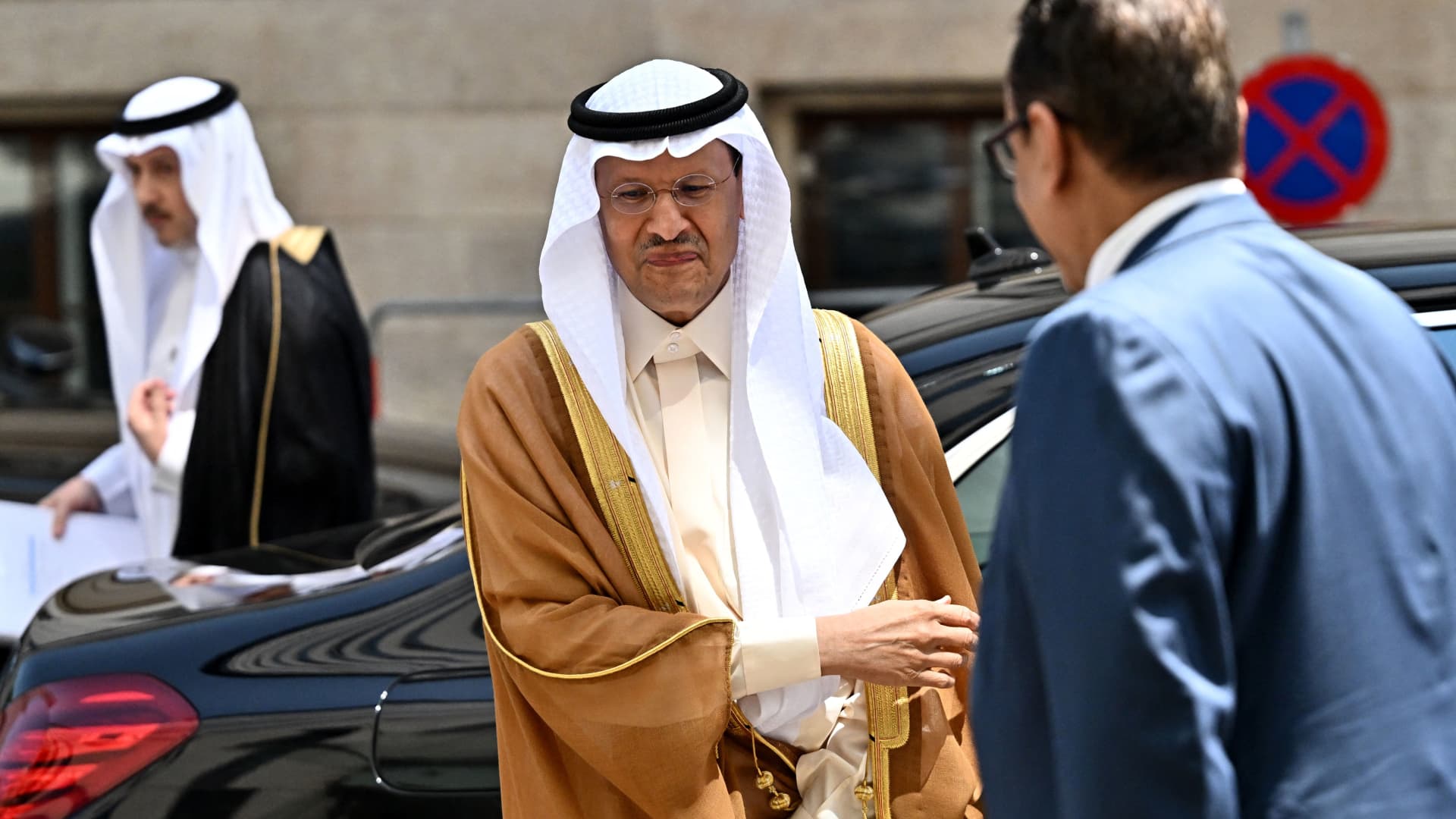Saudi Minister of Energy Prince Abdulaziz bin Salman al-Saud arrives for the Organization of Petroleum Exporting Countries (OPEC) meeting in Vienna on June 3, 2023.
Joe Klamar | Afp | Getty Images
The influential Organization of the Petroleum Exporting Countries (OPEC) and its allies, known as OPEC+, on Sunday made no changes to its planned oil production cuts for this year, as coalition chair Saudi Arabia announced further voluntary declines.
OPEC+ also announced in a statement that it will limit combined oil production to 40.463 million barrels per day over January-December 2024.
Previously, the alliance agreed to a 2 million barrels-per-day decline in October. Some OPEC+ members also announced some voluntary drops of just over 1.6 million barrels per day in April. Russia’s Deputy Prime Minister Alexander Novak said Sunday that all voluntary cuts, which were initially set to expire after 2023, will now be extended until the end of 2024, in comments reported by Reuters.
Saudi Arabia’s energy ministry said Riyadh will implement an additional voluntary one-month 1 million-barrel-per-day cut starting this July, which can be extended. This will bring the kingdom’s total voluntary declines to 1.5 million barrels per day over the period, reining in its production to 9 million barrels.
The move of the 23-country alliance follows contentious talks that dragged well into the night on Saturday, as well as a more-than four-hour Sunday meeting of the alliance’s Joint Ministerial Monitoring Committee, which recommends, but does not implement, policy.
At stake for OPEC+ is a battle to reconcile an outlook of tighter supply in the second half of the year, current macro-economic and inflationary concerns, and intergroup diplomacy.
Ahead of the meeting, Saudi oil minister Prince Abdulaziz bin Salman in late May warned oil market speculators to “watch out,” in a comment widely read as heralding another supply cut.
It remains to be seen if the 2024 reduction in output will offer long-term support to current oil futures prices when markets open on Monday, following months of pressure from global financial turmoil since the start of the year.
Brent futures most recently settled at $76.13 per barrel on Friday, with several OPEC+ delegates noting the deepening divide between prices and supply-demand fundamentals.
Back to bases
The producers’ alliance also agreed to review baselines — the starting level from which producers cut their output during OPEC+ agreements, usually by a similar percentage — for 2025, following a study of countries’ output capacities by oil analysts IHS, Wood Mackenzie and Rystad Energy.
A higher baseline translates into a higher output ceiling. Critically, baselines are often reused in new iterations of OPEC+ agreements and their review and later adjustment are often contentious, meaning they could bind producers longer term.
OPEC heavyweight UAE has been long vying for an upward revision to its baseline, receiving part of such a concession in July 2021.
Other producers of the alliance, such as Angola and Nigeria, have meanwhile long fallen short of lifting their output to their assigned OPEC+ quotas amid sabotage, depleting capacity and underinvestment — but potential changes to their baselines to reflect these realities were not formally broached before because of the sensitivity of these discussions, delegates told CNBC.


